Wired-up sculptor Cherise Thomson’s creation will turn heads at Fieldays

An Auckland artist regularly uses hundreds of kilometres of wire, but she isn’t making fences.
Words and photos: Nicole Barratt
Cherise Thomson’s dining table isn’t often recognisable as a dining table. Coiled balls of fencing wire and needle-nosed pliers cover its surface. Cherise’s children stared in disbelief one day when the table was clear of clutter – “We quite like this mum, what is it?” They asked when they sat down to dumplings that night.
Auckland-based Cherise, 43, isn’t a farmer, and she doesn’t use wire for fencing. The full-time artist creates intricate sculptures in woven and crimped wire.
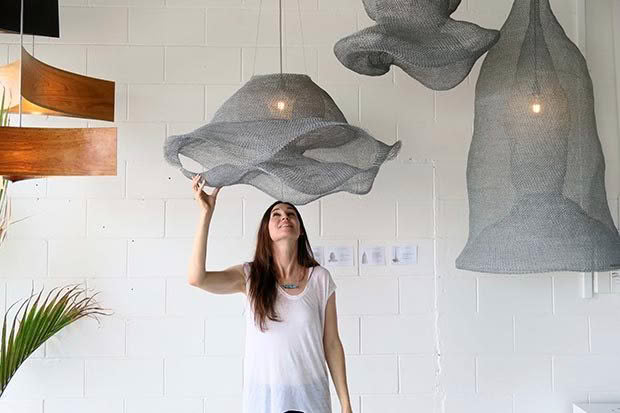
Cherise with her sculpture ‘Kai Nui’, meaning ‘high tide’ or big sea’ in Hawaiian. It took 1177m of wire to weave.
From a distance her creations appear to float mid-air like great metallic sea creatures. Rows upon rows of spiralling links can withstand wind, rain and curious prods. It’s sculpted magic she’s created with galvanised and No. 8 fencing wire.
Months of work, and 100s of kilometres of wire, go into her sculptures – each of which can cost anywhere from $3000 to over $10,000. “I’ve learned that I have to respect wire as an organic object. You look at a spool of wire and it just looks like a straight line, but actually it’s dynamic,” Cherise says.
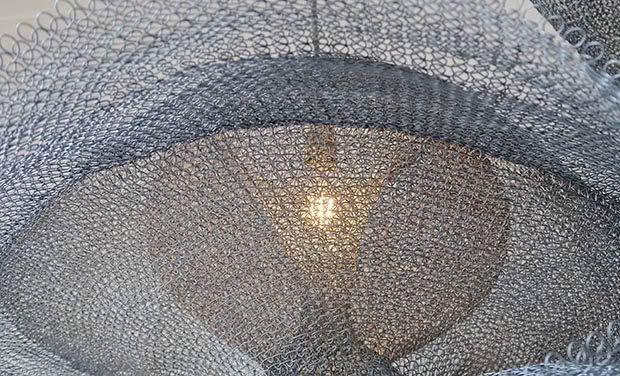
Several hundred kilometres of wire go into each piece.
Lower Hutt-born Cherise’s family relocated to Hawaii after her father was offered a job as a kitchen designer. Her childhood was idyllic, much of it spent devouring papayas and body surfing at Hawaii Kai’s Makapu’u Beach.
Cherise had an early attraction to sculpting. She recalls bending old telephone cords into spindly rings as a seven-year-old and selling them to neighbours.
Teenage Cherise didn’t have much faith in art as a potential career path. She didn’t know anyone making a living as an artist and wanted to make sure she could provide for herself. A high school dream – to have an import-export business between Russia and New Zealand (although she can’t remember what on earth inspired it) – led to her enrolment in an international business degree at London’s Richmond University.
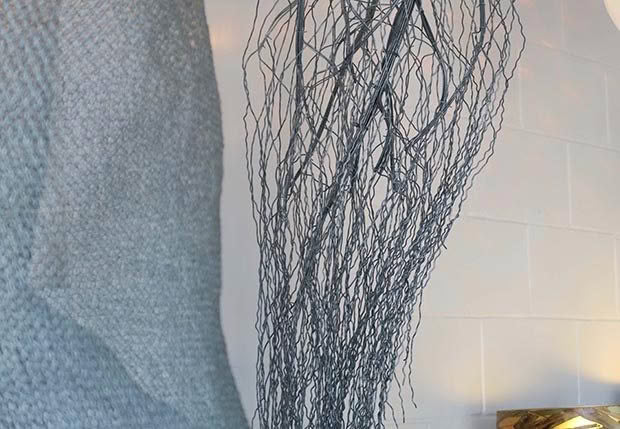
Cherise’s sculpture ‘After Inflorescence’ is made from a mix of No. 8 gauge fencing wire and lighter gauge wire.
“Even though I went for a business degree, London was attractive because it had so much art and history to absorb.”
When Cherise’s Richmond University Russian papers were cancelled, she switched to art papers instead. Her art education included classes in sculpture, ceramics and mould making. “It was like a fun diversion at first. I didn’t take art too seriously, but then I fell in love with the process of creating.”
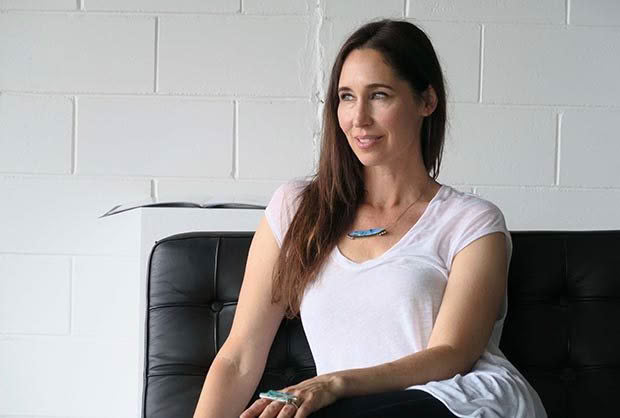
She was a straight-A business student but, by the end of her degree, felt drawn to sculpting. Cherise loved working with her hands, whether they were covered in plasticine, wielding a chisel knife or wrist-deep in clay.
She’s truly a global citizen. On completion of her degree, she headed to New York to learn from specialists in sculpture.
While working as an apprentice for a studio specialising in art restorations for museums she observed artists restore Picassos and Matisses. Despite her junior position, she was trusted with a Ming Dynasty vase in pieces. Her first job was to glue it back together.
Cherise settled in Auckland in 2010 with her New Zealand husband she met overseas. Her Birkenhead Point home, between bush and the sea, gave her the clarity of mind she needed to create.
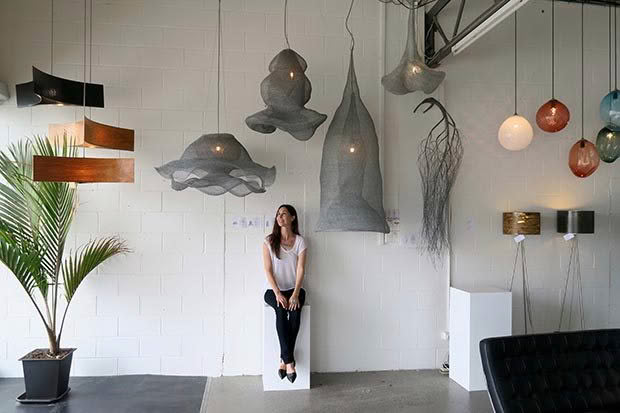
Cherise’s sculptures on display at Auckland’s Epsilon Lighting.
An exhibition of the American wire sculptor Ruth Asawa’s work prompted her to experiment with wire. “I’d never seen it used in such large-scale sculptures. I’d only ever seen wire stick figures and garden ornaments.”
Cherise researched online library archives obsessively for images of Native American Indian basket weavers and their creations. “Their work helped me formulate my own process of how to go about creating the shapes I had in my mind.”
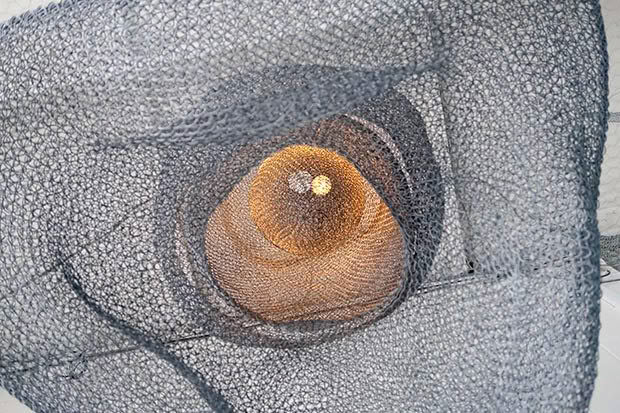
Her sculpture ‘Pua Laha Ole’ is inspired by blossoms.
It helps that she sees in shapes, which she admits sounds funny. “I dream of shapes and think in shapes and all I do is try to solve problems of how to make those shapes. Even with music, I could create its form with shapes.”
It’s not all smooth weaving. Galvanised, No. 8 and copper wire present challenges.
Initially, sourcing wire was tricky. There were hours spent trawling through scrap yards, pleas to metal businesses in the Yellow Pages, and four months of wrestling with Chorus-donated copper wire, which was delivered wrapped in plastic tubes.
Eventually she came across an east Auckland metal factory which supplied fencing wire. “The guys there thought it was hilarious. They thought, ‘what could you possibly make from wire?’”
Photos of her No. 8 wire korowai, nikau branch and giant twisting forms now hang on their office wall.
Cherise talks about working with wire as if it’s a living creature. Most of the time she just follows where the wire wants to take her. She couldn’t form a symmetrical shape if she wanted to; you can’t fight against it; and you have to relax to handle it.
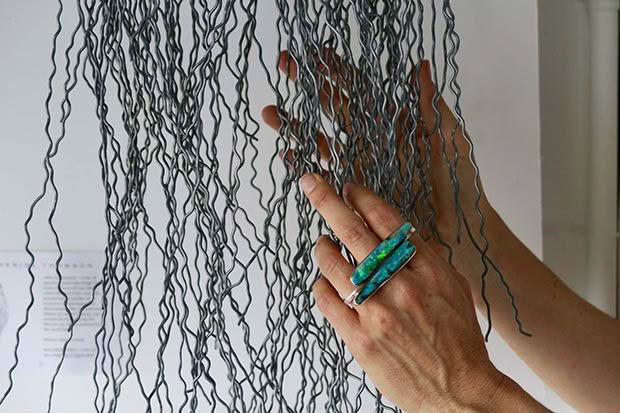
Cherise says taking hand exercise-breaks while weaving stops her from getting sore fingers.
“I have to prepare it to weave it in sections rather than a giant spool, which makes it more manageable. Then I just use my bare hands and I weave it.”
There are times it looks like Edward Scissorhands has gone to town on her forearms.
There’s no going back with wire sculpting. “Unravelling it would destroy it, I just have to commit.” She compares finishing a piece to cutting an umbilical cord – sometimes a few tears are shed before the piece is shipped off to its new home.
She isn’t planning on tucking her wire away in the cupboard this summer. There’s a large-scale commission to complete for Waikato Fieldays’ 50th anniversary. Cherise’s tribute to a coil of copper used as collateral to purchase the original Fieldays land will be on display at Waikato Museum next year.
“I’m at a point where I’m doing exactly what I love and I’m creating what I love. I’m becoming the artist I always knew I was inside, and it feels perfectly natural.”

